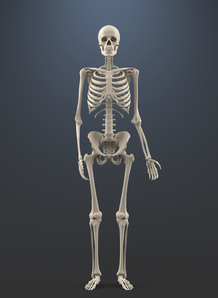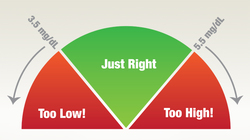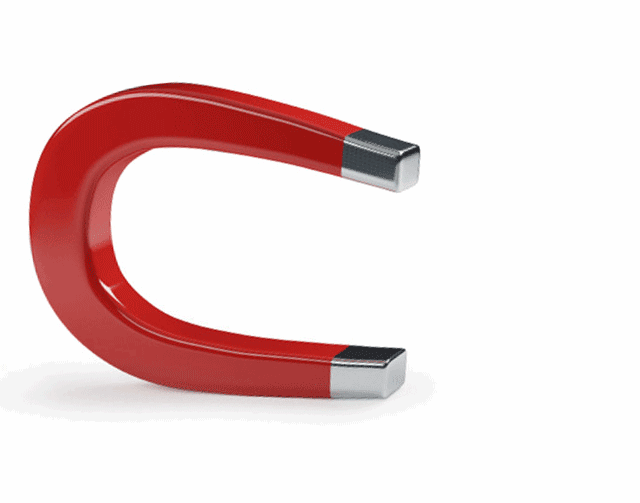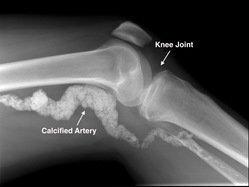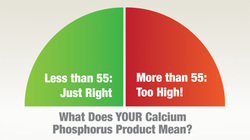Balancing Minerals in the Blood
Chances are you haven’t given a lot of thought to the levels of calcium or phosphorus in your blood. When your kidneys work well, you really don’t need to think about them. Your kidneys take care of keeping your blood levels where they should be. But if your kidneys don’t work as well as they should, your blood levels of these key minerals could change, and that can cause problems for you.
Kidneys Help Build Strong Bones
Your kidneys work with your bones and your gut to keep the right amount of calcium and phosphorus in your blood all the time. Healthy kidneys help your bones in two ways:
- They convert Vitamin D from your skin or from Vitamin D supplements you take into its active form. Your gut needs active Vitamin D to absorb calcium from what you eat and drink. Without active Vitamin D, it doesn’t matter how much calcium you get.
- Kidneys control levels of the minerals calcium and phosphorus in your blood, too.
Calcium is an Electrolyte
In your blood, tiny but precise amounts of dissolved calcium help your cells talk to each other. Calcium is an electrolyte. It helps carry electrical signals between your muscles and nerves. Having the right amount of calcium in your blood is key to good health.
What YOU Can Do About Your Calcium
To absorb calcium from foods you eat, you need active vitamin D. Your kidneys help convert vitamin D into its active form. When your kidneys don’t work well, your doctor may prescribe active vitamin D for you to make up for what you are missing. To learn more about active vitamin D, visit the Bone Disease Topic.
Where Do You Get Phosphorus?
Phosphorus is a mineral. Like calcium, it is very common in the earth—and in your own cells. Phosphorus is stored in your bones and teeth, and is part of each cell membrane. In your blood, phosphorus plays a vital role in your use of energy. And, it is an electrolyte, which helps carry nerve signals. It is found in most foods.
What Does Your Serum Phosphorus Level Mean?
Do you know your serum phosphorus level? If you do, plug it into our Phosphorus Calculator to see how you’re doing with your phosphorus.
• Too high! If your phosphorus level is above 5.5 mg/dL, you might have severe itching. Or, you might not feel any different. But, in the long run, phosphorus levels that are too high can lead to bone and other health problems if your calcium level is high, too. If you are taking active vitamin D, your doctor may lower your dose.
• Just right. Good for you if your phosphorus level is in the target range. This is right where your care team likes to see it. Keep up the good work.
• Too low! If your phosphorus level is below 3.5 mg/dL, talk to your care team to see if this needs treatment.
What Can You Do About Your Phosphorus?
Keeping your phosphorus in the normal range may mean changing what you eat and drink. To learn more about how to eat right, visit the Nutrition Room. You may also need to take phosphate binders with meals and snacks to keep some of the excess phosphate from getting into your blood. Visit the Pharmacy to learn more about binders and other medicines.
Calcium + Phosphorus Can Harden Blood Vessels
When your kidneys don’t work, having too much calcium and phosphorus in your blood is a problem. The two minerals can join and form deposits in your skin, causing painful itching. Or, deposits can form in your blood vessels where they may cut off blood flow to a limb. Your doctor may prescribe phosphate binders for you so your blood levels don’t go too high.
Calcium Phosphorus Product
Do you know your serum calcium and your serum phosphorus? If you do, plug them into our Calcium Phosphorus Calculator to see what your calcium phosphorus product (Ca x P) is.
More than 55: Having a calcium phosphorus product that is higher than 55 puts you at higher risk for blood vessel calcification. Bone is vital to have—in your skeleton. But when bone forms in your blood vessels, it can cut off the blood supply to your limbs. Keeping your calcium and phosphorus in the target range your care team sets is one way to prevent this problem.
Less than 55: Good for you! Your calcium phosphorus product is in the range that can help prevent blood vessel calcification. Bone is vital to have—in your skeleton. But when bone forms in your blood vessels, it can cut off the blood supply to your limbs. You could get gangrene or even lose a limb. This is rare, but it can happen. Keeping your calcium and phosphorus in the target range your care team sets is one way to prevent this problem.
Calcium & Phosphorus
- What do your kidneys have to do with healthy bones?
Not scored Healthy kidneys convert vitamin D into its active form. Active vitamin D lets your gut absorb calcium from food to keep your bones strong.
- An electrolyte helps:
Not scored Electrolytes help carry signals between your muscles and nerves.
- Phosphorus is found in your bones and plays a key role in:
Not scored Phosphorus helps your body convert the food you eat into energy.
- If your levels of calcium and phosphorus are both high, it could cause:
Not scored It is vital to keep both calcium and phosphorus in the target range your care team gives you.
- These foods are high in calcium and phosphorus:
Not scored All dairy foods like these are high in calcium and phosphorus.














